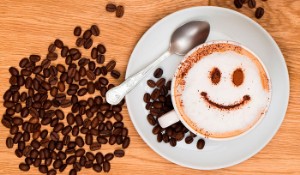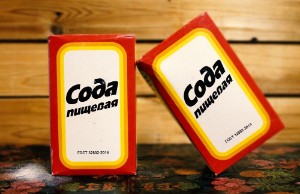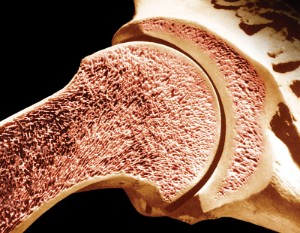Diet Rules &171;Table number 12&187; according to Pevsner, as well as food lists and menus for the week
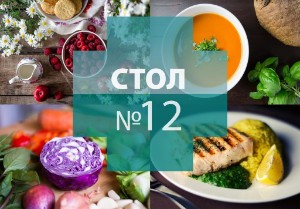 The quality of nutrition has a significant impact on the health and condition of the body. By taking into account individual characteristics in the diet, with the help of a special diet, certain problems inherent in the body can be corrected.
The quality of nutrition has a significant impact on the health and condition of the body. By taking into account individual characteristics in the diet, with the help of a special diet, certain problems inherent in the body can be corrected.
So, for functional diseases and disorders of the nervous system, experts recommend using the therapeutic diet "Table number 12", developed in the 1930s by Manuel Isaakovich Pevsner, the founder of dietetics in the USSR, the author 15 therapeutic diets .
Modern research in the USA also confirm the important role of human nutrition and lifestyle in the fight against neurological disorders.
In this article, we will consider what is the essence of diet No. 12 according to Pevsner and what are the specific indications for its observance.
Content
The essence and purpose of the diet
 A diet, often in addition to the main treatment, is prescribed for identified functional disorders and diseases of the nervous system.
A diet, often in addition to the main treatment, is prescribed for identified functional disorders and diseases of the nervous system.
Its beneficial effect is due, firstly, to a decrease in the amount of carbohydrates, fat, and salt consumed, and secondly, to the complete exclusion of pathogens of the central nervous system from the diet.
The latter include caffeinated drinks ( coffee , tea, etc.), spicy food, fried in copious amounts of fat or oil food.
To specific indications for the appointment of diet No. 12, first of all, the following apply:
- Diseases and disorders of the central nervous system ( depression , neuroses , sleep disorders and emotional reactions);
- The transition from the therapeutic diet No. 10 (prescribed for diseases of the cardiovascular and circulatory systems) to a rational diet.
We also recommend paying attention to MIND-a diet to improve brain function .
General rules
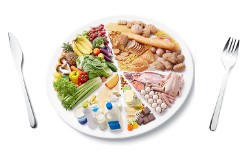 As mentioned above, the diet implies avoiding the consumption of some food groups and limited consumption of others.
As mentioned above, the diet implies avoiding the consumption of some food groups and limited consumption of others.
In addition, an important component of the diet is to increase the intake of useful food elements. Within the framework of this diet, they include, first of all, saturated with phosphorus salts (these are liver, legumes, dairy products).
As for the values of substances consumed from food and the distribution of the proportion of protein, fat and carbohydrate intake, for the diet Table No. 12 they are defined as follows for one day:
| Indicator: | Value: | Note: |
| Proteins: | 80 to 95 grams; | Proportion of animal protein from 50 to 60%; |
| Carbohydrates: | 350 grams; | &8212; |
| Fats: | 70 grams; | At least 30% of fats are of vegetable origin; |
| Salt: | 6 grams; | &8212; |
| Number of calories: | 2300-2400 kcal; | Depends on the individual characteristics of the body. |
The diet regimen is five times a day. In addition, it is important to ensure a systematic daily intake of food at the same time. This not only helps to improve the functional effect of the diet, but also stimulates a better metabolism and absorption of nutrients from the food consumed.
11 permitted products
Products whose consumption is recommended and necessary include:
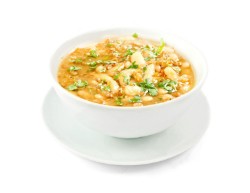
- Soups - it can be cooked in meat and fish broths (low-fat varieties of meat and fish) with the addition of vegetables, herbs and root vegetables;
- Cereals - all types of cereals;
- Vegetables and greens - beetroot, carrots (most useful in boiled form), pumpkin, jerusalem artichoke, tomatoes, cucumbers, zucchini, eggplant, pepper, celery, all greens (parsley, dill, coriander, lettuce, etc.) are especially useful and recommended by experts;
- Meat - non-fatty meat (lamb, veal, beef, as well as beef tongue) and poultry are best suited (it is important that the bird be raised on grain fattening, in terms of environmental cleanliness, turkey is many times preferable to chicken);
- Fish - experts recommend preferring the consumption of the least fatty fish species, these are perches, cod, hake, pike, mullet, gobies, sturgeon and seafood (you will have to abandon the consumption of salmon, halibut, oily fish and other species, breeds and crosses of fish (fatty));
- Eggs - consumption of eggs should be limited to two per day (boiled "soft boiled");
- Seasonal fruits and berries - in any adequate quantities;
- Milk and dairy products - recommended consumption of milk, kefir, sour cream, low-fat cottage cheese, low-fat cheese, etc.;
- Butter - vegetable and in limited quantities;
- Dried fruits, honey;
- Drinks - herbal (!) teas, decoctions of rosehip, hibiscus, juices from fruits and vegetables without added sugar.
It should be mentioned: the consumption of marshmallows or marshmallows is allowed from sweets, bread can be replaced with whole grain loaves, the consumption of lard is allowed.
6 Prohibited Food groups
To products whose consumption should be limited or completely excluded , includes the following:
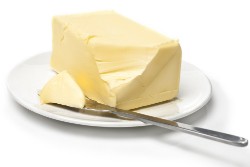
- Fresh muffins (bakery products, puff pastry);
- Fatty meat and fish products – pork, fatty lamb, salmon, canned food, stews and semi-finished products, as well as caviar;
- Spicy vegetable crops – pepper, garlic, onion, radish, sorrel;
- Drinks stimulating the activity of the central nervous system (coffee, teas, cocoa, alcoholic beverages);
- Fats of animal origin, with the exception of melted butter and lard, the consumption of which must also be limited;
- Spicy spices and sauces (horseradish, vinegar, mustard, spicy and spicy sauces, including exotic ones).
Sample menu for the week
Below is an approximate menu for the week, taking into account the requirements of the diet. The described distribution of products during the week and every day is of a recommendatory, introductory nature and involves the formation of one's own diet, taking into account individual characteristics and intolerances of the body in each specific case. This is how the recommended menu for every day looks like:
Monday
| Meal: | Foods: |
| Breakfast: | 1 egg, a glass of orange juice, a cup of herbal tea, whole grain bread, goat cheese; |
| Second breakfast: | 2 cheesecakes with sour cream and a glass of water (carbonated or not); |
| Lunch: | low-fat beef borscht, seaweed salad, hake, rice; |
| Afternoon snack: | Apples or other seasonal fruits, herbal tea, milk; |
| Dinner: | veal, vegetable salad. |
Tuesday
| Meal: | Products: |
| Breakfast: | 1 glass of water, oatmeal with honey and dried fruits; |
| Second breakfast: | apples or other seasonal fruits, herbal tea, milk; |
| Lunch: | cabbage soup in chicken broth with cereals, beef, legumes; |
| Afternoon tea: | caesar with chicken breast (without crackers), herbal tea, juice or water; |
| Dinner: | Zucchini pancakes, baked fillet of sea bass. |
Wednesday
| Meal: | Products: |
| Breakfast: | millet porridge with pumpkin and honey, herbal tea, orange juice or grapefruit; |
| Second breakfast: | red grapes, 2 cheesecakes with honey, jam or sour cream, water; |
| Lunch: | vegetable soup (minestrone), falafel, grilled cheese; |
| Afternoon snack: | cookies, dried fruits and hibiscus tincture (carcade); |
| Dinner: | durum wheat pasta with seafood and cream sauce. |
Thursday
| Meal: | Products: |
| Breakfast: | 2 eggs, orange juice, hummus with whole grain bread; |
| Second breakfast: | fruits or dried fruits, honey, nuts and cranberry juice; |
| Lunch: | Low-fat fish soup, seaweed or soy asparagus, beef, chicken or turkey cutlets; |
| Afternoon snack: | cookies with milk/ cottage cheese; |
| Dinner: | fried lamb with a side dish of rice, vegetables or a small portion of baked potato. |
Friday
| Meal: | Products: |
| Breakfast: | cheesecakes with honey or sour cream, a glass of water, yogurt; |
| Second breakfast: | cottage cheese, bananas, herbal tea; |
| Lunch: | soup with meatballs, low-fat lamb with vegetable side dish, hot herbal tea; |
| Afternoon tea: | salad of beans, tomatoes and tuna, flavored with mild spices and vegetable oil, whole grain bread; |
| Dinner: | red or brown wild rice, pike cutlets, vegetables. |
Saturday
| Meal: | Products: |
| Breakfast: | 2 cheesecakes with sour cream, honey or jam, nuts, herbal tea; |
| Second breakfast: | 1 grapefruit, bananas, mangoes or peaches; |
| Lunch: | soup with meat or chicken broth with cereals, vegetable salad, lean beef or beef tongue; |
| Afternoon snack: | rice porridge with milk, herbal tea or water; |
| Dinner: | salad (warm) with cod liver and boiled egg, whole grain bread. |
Sunday
| Meal: | Products: |
| Breakfast: | oatmeal porridge with apple or berries, nuts and honey, 2 cups of water; |
| Second breakfast: | beef liver with whole grain bread, jelly or mors; |
| Lunch: | soup with meat or chicken broth with cereals, low-fat fish with rice or vegetable side dish; |
| Afternoon snack: | fruits, cereals, nuts, dried fruits, honey, herbal tea. |
| Dinner: | veal medallions with vegetable salad, water. |
Several suitable recipes
Several recipes of dishes that meet the requirements of the diet are described below.
1. Hake in Moscow
A simple and delicious dish is suitable for lunch or dinner.
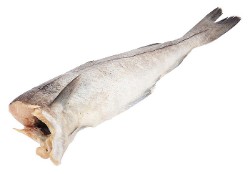
What you will need:
- Hake – 500 grams;
- Potatoes – 1 kg;
- Tomatoes – 500 grams;
- Cheese – 200 grams;
- Green onion – several pods.
It is prepared as follows:
- Preheat the oven to 200 C about . N
- A baking sheet, greased with vegetable or butter, is laid with sliced potatoes.
- The hake fillet cut into small pieces is laid out on top.
- Layers are laid on top: tomatoes (rings), potatoes, cheese is rubbed. It is important to cut the potatoes thinly enough so that the cooking time approximately coincides with the time when the fish is ready.
- The cooking process in the oven takes 30-45 minutes.
If desired, the dish is seasoned with green onions
2. Stewed veal with vegetables
What will be required:
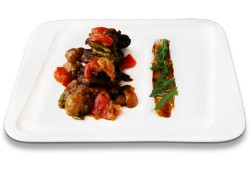
- Veal – 500 grams;
- Zucchini – 200 grams;
- Eggplant – 200 grams;
- Tomatoes – 1-2 small tomatoes;
- Celery (root) – 1-2 pieces;
- Bell pepper – 1-2 pieces.
The recipe is just as simple:
- Spread the baking sheet with foil, preheat the oven to 200-220 C about .
- Cut all the ingredients into small cubes, lightly lubricate with oil, salt and pepper, mix together.
- Cover the baking sheet with foil (tightly), make several holes with a toothpick for better air circulation.
- It takes 60-80 minutes to cook.
Serve garnished with fresh herbs (kenza and parsley are best suited).
Nutrition features for children
Table number 12 is suitable for compliance by a child, however, in this case, consultation with a pediatrician is mandatory, who will give additional recommendations on diet, taking into account the special needs of a growing organism, directly depending on the stage of growth, the characteristics of the process and the individual characteristics of the body.
Useful video
We recommend you to familiarize yourself with this video:
Conclusion
Thus, taking into account the recommendations for the consumption of certain types of products and the exclusion or restriction of others, it is possible to correct functional disorders and diseases of the nervous system by following diet number 12.

